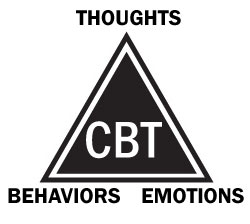
Anxiety disorders represent one of the most common mental illnesses, afflicting approximately one in 10 in the general population. In ordinary life, everyone experiences some form of anxiety. When a threatening situation is perceived, a life changing decision is made, a test result is expected, or good or bad news is anticipated, acute anxiety and heightened anticipation builds up and gradually fades once the stressful situation is resolved or removed.
Acute anxiety is therefore a necessary part of everyday life; however, chronic anxiety – continual anxious feelings which do not fade or diminish – can impede an individual’s ordinary functions, creating compulsive thoughts, irrational and obsessive fears, and unwanted and repeated eccentric behavior in otherwise normal, emotionally balanced individuals.
When anxiety begins to either gradually or suddenly take control of mental and behavioral functions, anxiety disorders develop. Without some type of medical or psychological treatment, anxiety disorders will persist. Such disorders typically fall into a broad range of categories.
Phobias
Phobias are intense fear reactions to specific objects, people or situations, often prompted by a previous negative experience with the feared situation, person or object. The most widespread of all anxiety disorders, some phobias are relatively common, such as the fear of snakes or spiders or the fear of flying.
Social Phobias
Social phobias are often particularly socially incapacitating and prevent phobia sufferers from leading so-called ‘normal’ social lives and forming relationships with people. Social phobia sufferers often wind up engaging in anti-social behavior and suffer from depression due to their lack of social skills and attendant isolation.
GAD (Generalized Anxiety Disorder)
Generalized Anxiety Disorder is a general feeling of malaise, often manifesting in a general anxiety which spreads to all aspects of life. Constant worry about careers, finance, money, health and general welfare without any significant cause for such fear causes anxiety sufferers to regularly suffer from poor concentration, irritability, trembling, tension and shortness of breath.
Obsessive Compulsive Disorder
Obsessive Compulsive Disorder prompts unnecessary and often bizarre, repetitive behavior that is encouraged by the constant thought that omission of the compulsive act will result in destruction or impending disaster.
Panic Disorders
Panic disorders can be sudden or situation oriented and results in inappropriate and exaggerated physical and emotional responses in the body when confronted with false threats or danger. Panic attacks leave sufferers with frightening feelings of insanity and loss of control of mental facilities.
Post Traumatic Stress Disorder
Post-Traumatic stress sufferers experience heightened levels of anxiety in the aftermath of a shock or stressful event such as a death or natural disaster. Normally, anxiety levels lessen over time; however, post traumatic sufferers find that anxiety and stress levels remain stable or increase with the passing of time.
Anxiety disorders frequently accompany other dangerous illnesses and conditions as well, such as anorexia, bulimia or substance dependence and one condition may lead to the other.
Anxiety disorders are not purely psychological in origin. Medical conditions, like thyroid problems, or anemia can cause long-term anxiety in sufferers. Physiology plays an important role, as does heredity. Changes in brain neurotransmitters, which are responsible for secreting hormones, which regulate anxiety, can also cause chronic long term anxiety disorders.






